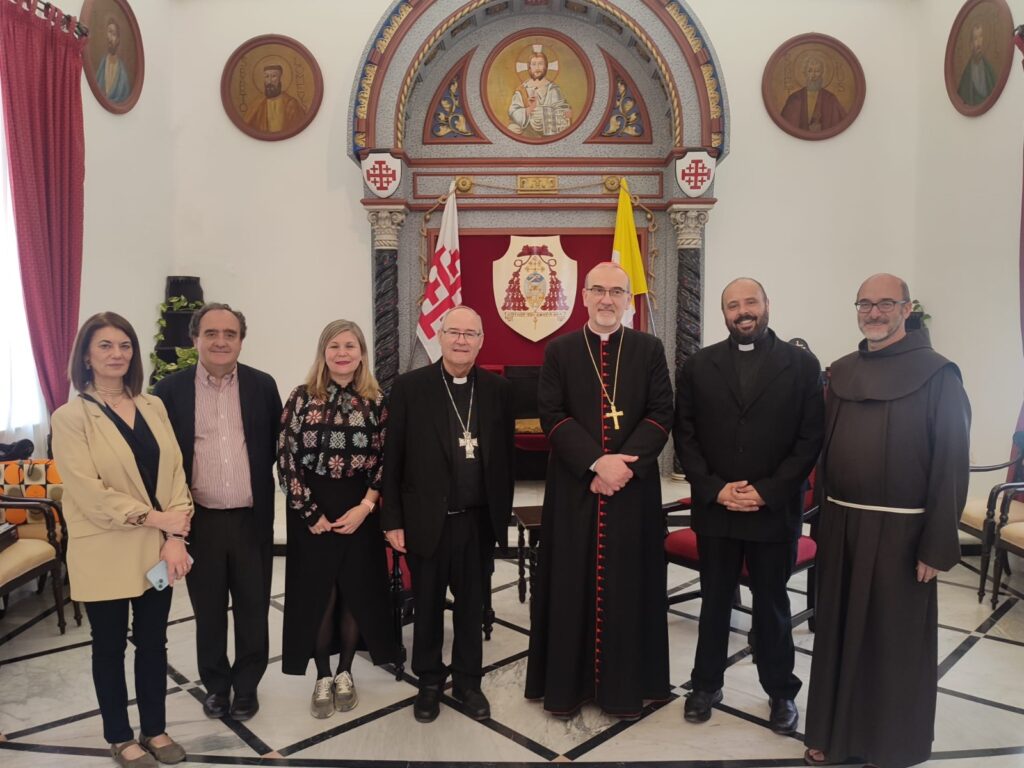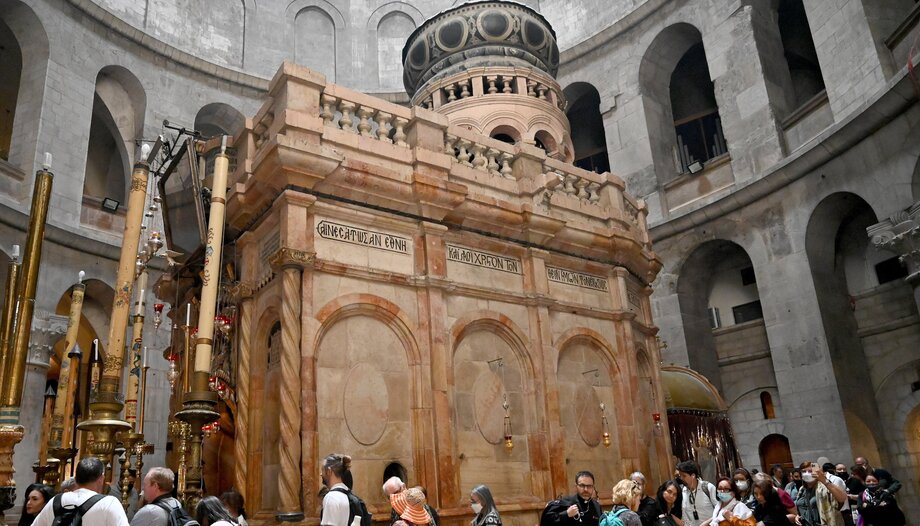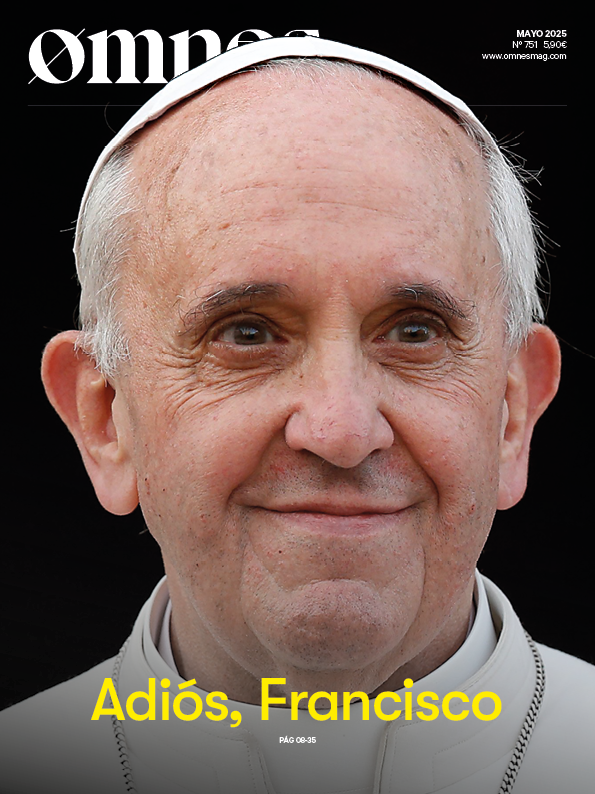These are hard times for Christians in the Holy Land. Poverty, migration and wars exert more and more pressure. But there is a time of solidarity and hope ahead of the Holy Land collection. "Prayer, which has an infinite value, the pilgrimagesand now, the Pontifical collection The Good Friday celebrations at the Holy Places are very important for the Christian communities in the Holy Land".
Luis Quintana (Burgos, 1974), a Franciscan of the Order of Friars Minor (ofm), president of the commissioners (as ambassadors) of Spain and Portugal, and representative in Spain of the Custodian of the Holy LandFrancesco Patton. The theme of this year's Day, which includes the collection and other items: prayer, motivation, poster, triptych, etc., is: 'Holy Land, open door to hope'.
The heart, captivated in the Holy Places
In a one-on-one conversation in the parish of Cristo de la Paz, in the Madrid district of Carabanchel, run by the Franciscans, Friar Luis Quintana, from Burgos, spoke frankly about the important Collection that we are now detailing, its destination and the Jubilee. We talked about the important Collection that we are now detailing, its destination, and the Jubilee. But before that, we asked him about his first relationship with Holy Landand for the context.

"In September 2000, I went to the Holy Land for the first time, and my heart was captured by the Holy Places, by the Holy Land. For that reason, when I made my solemn vows in 2006, I asked to go there for a long experience. It was from February to July 2007", reveals Fray Luis.
"The Christians who are there are. having a very hard time. They are now less than 1.5 percent. In Bethany there is no Christian family, although there are two religious communities (the Franciscans and a women's congregation). Martha, Mary and Lazarus were three people in Bethany. In Emmaus there is a Christian family," he says.
Good Friday Collection: housing, jobs, education and health care
It is always helpful to know what the proceeds of the collection will be used for. Eighty percent of what the Custody of the Holy Land receives goes to social work and 20 percent to the maintenance of the sanctuaries. And 20 percent goes to the maintenance of the sanctuaries. And what is social work there? There are four concepts, explains Friar Luis Quintana.
"First, housing. The Custody owns many houses. They, the families, pay the rent, electricity, gas and water. We have the property and the works, the maintenance."
"The second objective is work. There are about two thousand direct employees in the Custody, many schools, almost 40,000 students, hospitals, health centers. Providing jobs is very important.
Christian education in the Holy Land
"Thirdly, education, also very important. For both Christians and Muslims, we don't distinguish," he says. "An education from Christianity, they are confessional schools." And the curator begins to tell concrete stories, the ideology:
"In May, every day, flowers to Mary. At Christmas, the classrooms are filled with nativity scenes, crucifixes in every classroom and many details. Muslims want our education. But there is also something on our side: when Ramadan comes, we finish classes a little early; if a parent of a Muslim child dies, the Christian children go to pray in the mosque; in religion classes, Christians and Muslims are separated."
Tolerance of Islam, Christian denominational schools
Keep going, we encourage you. He continues: "There is a lot of tolerance towards Islam, but the school is a confessional Christian school. Our Lady is in the courtyard, all Christian feasts are celebrated, ashes on Wednesday. Muslims mostly prefer Christian schools. The first boys' school in the Holy Land was Christian, the second was Jewish, and the third Muslim. The same thing happened with the girls. And with the mixed school, the same. The first mixed school was Christian".
"The big schools of ours are Jerusalem, Bethlehem in second place, Jericho and Nazareth. Then there are more. These are the main ones. We also refer to the college of Amman, in Jordan, and the college of Damascus, in Syria. And the one in Beirut, in Lebanon."
"The fourth block, as we have talked about, is health care. Health centers, hospitals, dispensaries, in some cases they are parish dispensaries, as in Syria; there are many formulas...".
A bit of history: the Custody and the collection, originated in the 1st century.
The Custody of the Holy Land was founded by St. Francis of Assisi in 1217, with the sending of the first friars, and was entrusted to the Franciscans by Pope Clement VI in 1342.
It is present today in Israel, Palestine, Jordan, Egypt, Syria, Lebanon, Cyprus and Rhodes. "In Egypt, vocations have grown so much that they now have an independent province," says Friar Luis Quintana.
The Custos of the Holy Land and his team have insisted on the importance of this support for the Good Friday collection, which was started by St. Peter and St. Paul, according to the Acts of the Apostles, and which has been celebrated uninterruptedly since 1420, 605 years ago.
As an example, some words of the Italian Custodian could be highlighted from the Minister General or the Egyptian Vicar of the Custody, Ibrahim FaltasPope Francis is very fond of him, he has mentioned him several times, and he became famous because after the Gaza war, he took several children to operate in hospitals in Italy". But this would take too long. You can consult them yourselves.
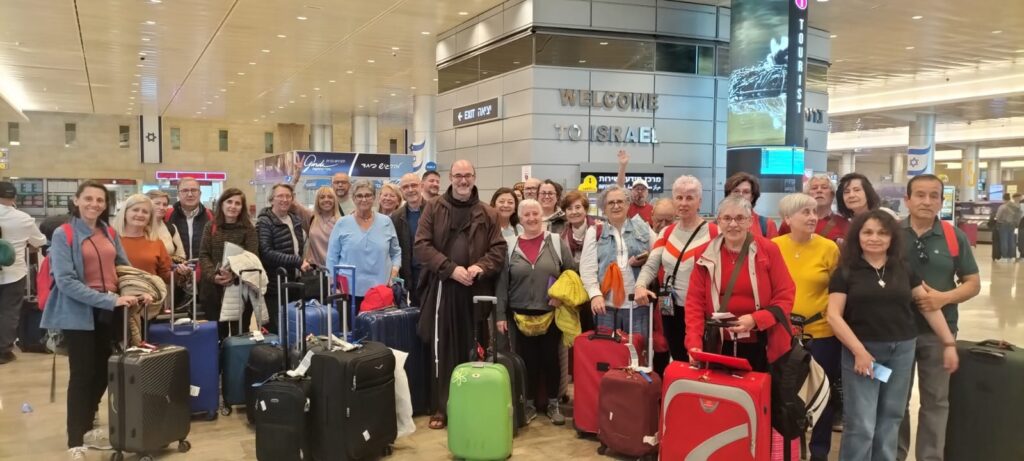
Three Holy Doors for the Jubilee of Hope
In conclusion, there are two aspects that Friar Luis Quintana would like to mention. These are the Holy Doors of the Jubilee at Holy Landand the recently blessed chapel of the Immaculate Conception.
"We are in the year of hope, the Jubilee is a sign of hope, and there are three Holy Doors to earn the Jubilee in Israel: "Nazareth, where the Word became flesh, the Annunciation; Bethlehem, where Jesus was born, the Nativity; and the Holy Sepulcher, where Christ was resurrected, Jerusalem."
"Last year, the slogan, the general line, was around red, blood, the Holy Land is still suffering, the war had just started on October 7. We wanted to express suffering, and the image was Gethsemane."
"This year, we have changed to the color green, hope, jubilee, open doors, the open door with the Franciscans going out in procession the Cross, Christ comes out to meet us to receive us, a line that we wanted to keep."
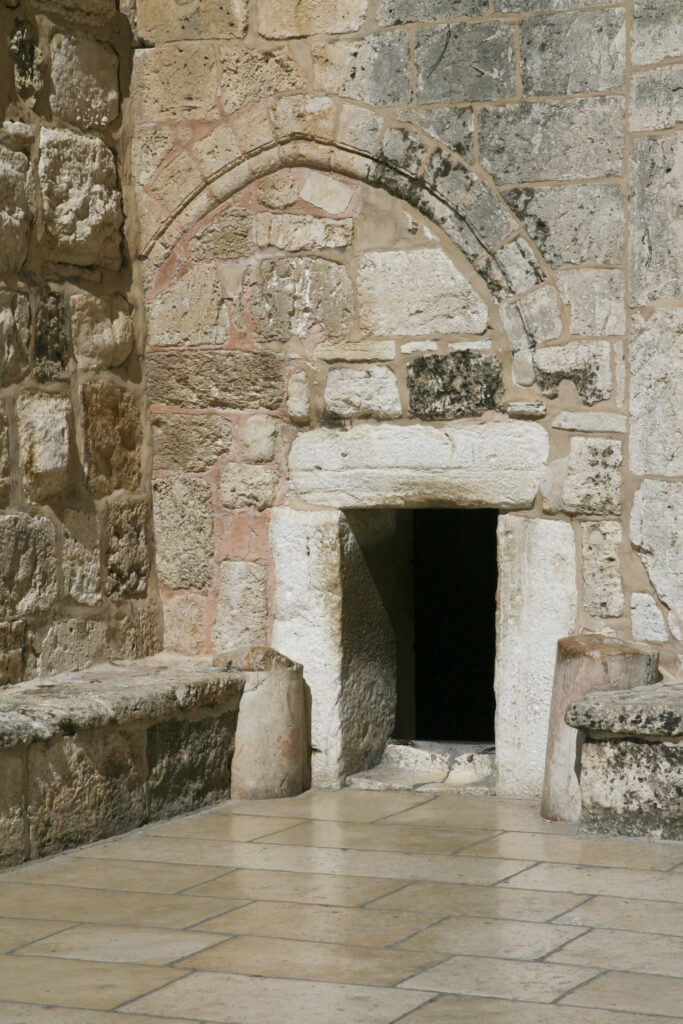
Chapel of the Immaculate Conception in the Holy Land
A sample button of this hope can be found in a news item. The inauguration of a new chapel In the Holy Land, Friar Luis tells us. "April 5 was a very special day for our Province of the Immaculate Conception, a historic day, because we inaugurated a new chapel in the Holy Land financed by our Commissariat of the Holy Land, and we have named it after the Province: "Chapel of the Immaculate Conception".
The Archbishop of Toledo, Msgr. Francisco Cerro, presided at the Eucharist in the Upper Chapel of Our Lady of Guadalupe, in the Field of the Shepherds (Beit Sahour, near Bethlehem), in the presence of Friar Francesco Patton, Custos of the Holy Land, a large group of Franciscans and secular priests, the Consul General, Javier Gutierrez, and many Spanish residents in the Holy Land, both in Israel and in the territories of the Palestinian National Authority.
Luis Quintana points out that the Holy Land already has a new chapel, thanks to the generosity of Spanish pilgrims (which is why it has already been baptized "the Spanish chapel"). "It is the first time in history that the Franciscan Province has financed a chapel in the Holy Land, with a capacity for more than 200 people," he adds.
